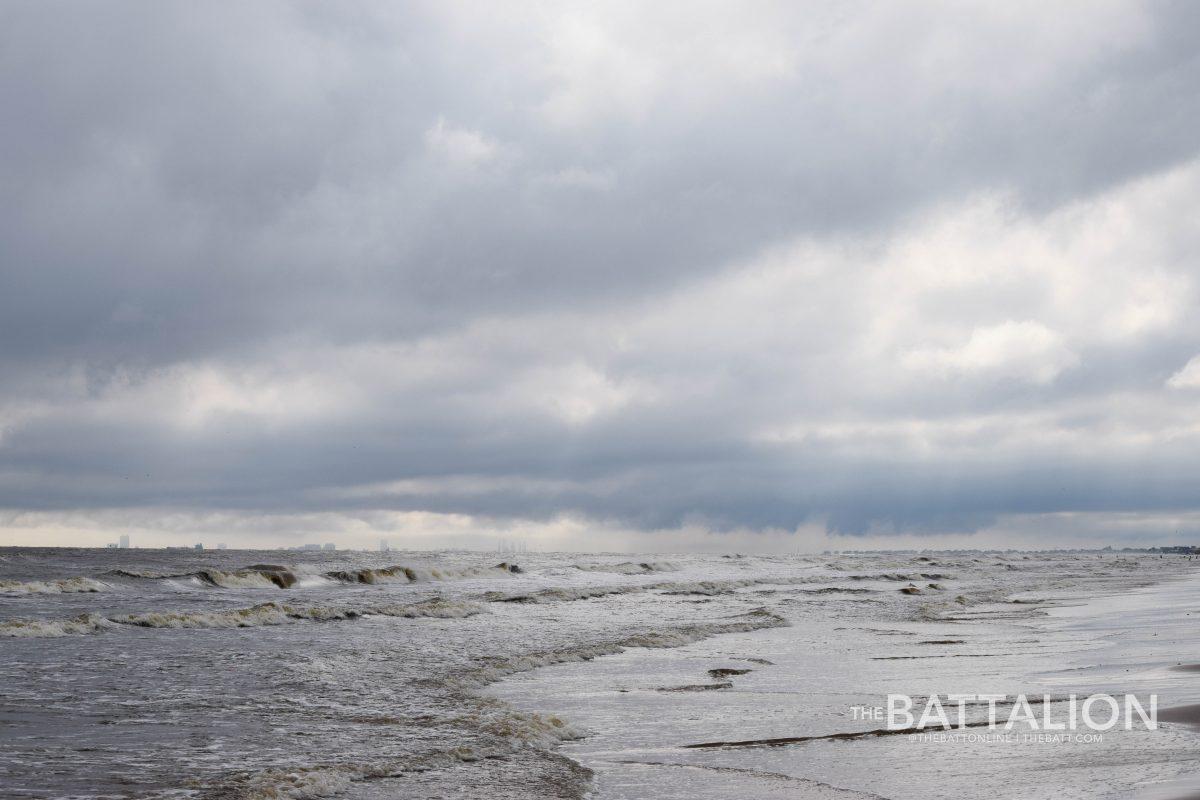From COVID-19 to California wildfires to a tense presidential election, the multiple hurricanes that have hit the Texas shoreline are only another addition to the challenges of 2020. The hurricanes resulted in raging storms and increased precipitation in surrounding areas and contributed to beach erosion.
According to phys.org, studies reveal that 64 percent of the Texas coast is eroding at a rate of six feet per year. The same piece said that although the entire Texas coastline suffers from erosion, Galveston is “ground zero.”
Jens Figlus, a professor in the Department of Ocean Engineering at Texas A&M-Galveston, has spent a lot of time discovering the reason behind beach erosion.
“When we think of a certain beach ‘eroding,’ usually what that means is that more sediment along the shoreline is being moved away than deposited at that location,” Figlus said. “The result is a retreat of the shoreline. In Texas, it is fairly easy for waves and currents to erode beach sediment because sediment is very fine here and requires only relatively small forces to be picked up and moved.”
Figlus said his departmental research group, the Coastal Engineering Lab, or CEL, studies how coastal systems function through field and laboratory tests, as well as numerical model simulations.
“Armed with that information, we try to predict future trends and find engineering solutions to help protect communities, infrastructure and ecosystems from adverse coastal impacts,” Figlus said.
Figlus said storms cause higher water levels and increased wave energy, moving sediment from the beaches as normal erosion would, but at a farther and faster rate.
“The difference is that storms can have the potential to move the sediment material further away from the shoreline and that the elevated water levels allow for storm waves to act on sediment much higher up on the beach profile and even on the dunes,” Figlus said. “It takes nature longer to move that material back to the beach once the storm has subsided, so the immediate erosion looks more dramatic. A whole sequence of storms without much recovery period in between exacerbates that situation.”
When it comes to the direct and indirect effects of beach erosion, Figlus said erosion is still a natural occurrence, but it causes problems because beaches are popular for housing, recreation and economic development.
“Houses, roads, factories, seawalls and other ‘fixed’ structures near beaches do not have the ability to easily move landward as erosion continues and become thus more at risk for flooding and destruction as erosion moves the shoreline further landward,” Figlus said. “There are also negative effects on the coastal ecosystem if the lost beach area is not replaced by other ecosystem area[s] nearby, and thus lost as habitat for species.”
Figlus said the most common approach to dealing with erosion is beach nourishment, which is an engineering approach of gathering sediment from somewhere else and using it to extend the eroding shoreline. Figlus said other possible solutions such as seawalls and planting specific vegetation can provide a more permanent solution.
“In my view, there is no single most viable solution to address the problem of beach erosion. The best solution varies from location to location and depends on the objectives of all stakeholders involved and the infrastructure at risk,” Figlus said. “The best solutions usually involve carefully thought out nourishment plans and employ natural and nature-based processes to retain and supply sediment to an area where it is needed. This can be done in the form of beneficial use of dredged material, strategic vegetation planting, and innovative structure design.”
Storms increase Texas’ beach erosion problem
November 12, 2020
Photo by Photo by Taryn Holmes
Texas A&M University-Galveston professor Jens Figlus explores the problem of recent storms causing an increase in Texas beach erosion.
Donate to The Battalion
Your donation will support the student journalists of Texas A&M University - College Station. Your contribution will allow us to purchase equipment and cover our annual website hosting costs.




















